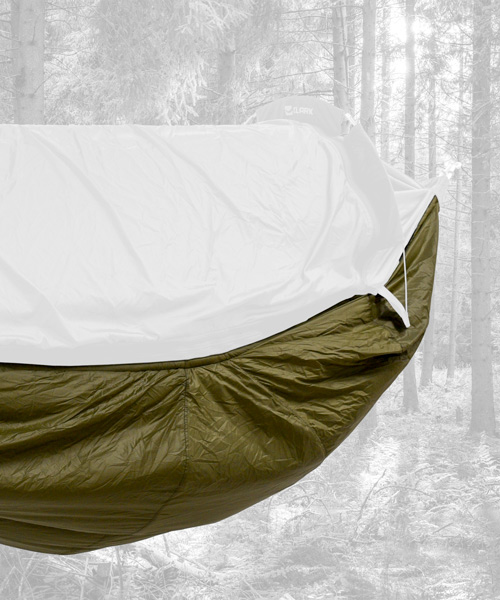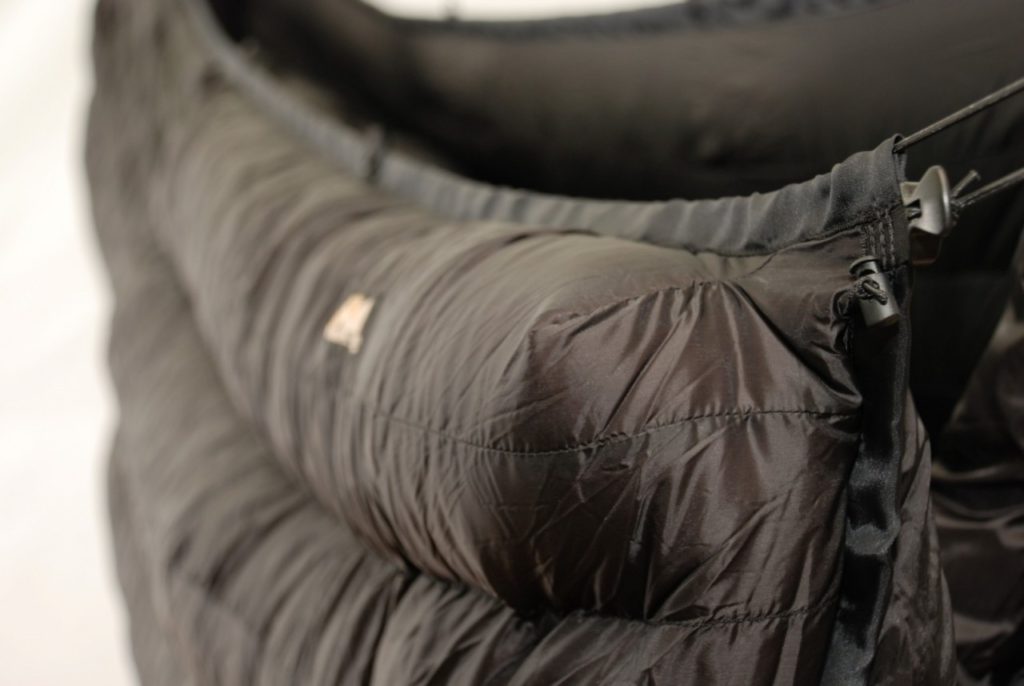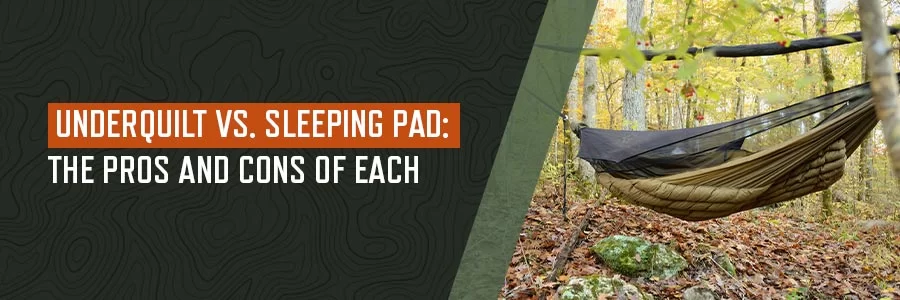November 3, 2021
posted in: Fabric
Underquilts vs. Sleeping Pads
Portable and convenient, hammocks can offer an improved twist on camping or backpacking. However, when night falls, it’s crucial to keep yourself warm. Underquilts and sleeping pads are two insulation methods you can use. Which one should you pick? Here is a quick overview of both so you can make the right decision.
What Are Underquilts?

An underquilt is a single layer of lofty down that keeps your lower half snug throughout the night. When you hang it underneath your hammock, it locks in warm air while preventing cold air from getting in.
The fibers that create this insulation are outside the hammock and safe from extra weight, meaning you’ll get all the warmth your underquilt has to offer. Because underquilts use your natural body heat, your hammock will stay at your own optimal temperatures.
What Are Sleeping Pads?
Sleeping pads are inflatable or foam pads that stay in your hammock with you. Like underquilts, they provide warmth for the bottom half of your hammock so you can have a comfortable sleep. Most sleeping pads taper at the ends for a snug fit in any hammock, but they can also come in a square shape. These square versions might be a great option if you have a double-layered hammock with a designated holding sleeve.
Pros and Cons of Underquilts and Sleeping Pads
These hammock insulation methods each come with their own set of benefits and drawbacks. If you’re trying to decide which is best for you, here are some things to consider.
Pros of Underquilts
- More warmth: An underquilt’s downy and enveloping design is better for extreme weather.
- Easy to use: After you hang it up, you’re all set!
- Holds position more successfully: After some practice getting your quilt into a place that works with how you sleep, you’ll effortlessly secure your quilt for a night without any adjustments.
- Easily packable: While they may weigh more, underquilts are more compressible than sleeping pads, taking up less space when stored in your backpack.

Cons of Underquilts
- More expensive: Because they use higher-quality materials, underquilts tend to be more costly than sleeping pads.
- Less convenient to pack: Although lightweight options exist, a typical underquilt may be more difficult to fit in your bag.
- Complex rigging: If your hammock doesn’t have built-in storage for an underquilt, you’ll have to rig up some bungee cords and rope to attach it securely.
Pros of Sleeping Pads
- Versatile: Sleeping pads can inflate and deflate as needed. You can also use one if you need to spend a night on the ground.
- Less expensive: Sleeping pads are cost-effective if you’re new to hammock camping or need a temporary insulation solution.
- You might already own one: Those switching from tent camping likely own a sleeping pad, making it easily accessible and budget-friendly.
Cons of Sleeping Pads
- May need adjustment: Sleeping pads are prone to shifting during the night. Depending on your physique, the pad may also leave certain areas exposed.
- Less warmth: While they’re perfect for warmer nights, you might need more coverage or insulation for lower temperatures.
- May not fit hammock space: Many campers find that sleeping pads can be too narrow to fit the entire hammock space, affecting your comfort levels.
- Not as breathable: Sleeping pads are often constructed from materials that aren’t breathable, leaving you sweaty in some conditions.
Both underquilts and sleeping pads are viable choices for nighttime warmth. Pick what fits your lifestyle, personal tastes, and needs!
Popular Sleeping Bag and Underquilt FAQs
If you still have questions about using sleeping bags or underquilts, check out some of our most frequently asked questions below.
How Do You Stay Warm While Sleeping in a Hammock?
When you’re sleeping in a hammock during the winter, you want the proper insulation to keep you warm all night. As you’ve learned throughout this article, underquilts and sleeping pads are the go-to methods to keep out the cold and remain comfortable while you sleep. Neither option is better than another, so it’s essential to try out each to discover which you prefer.
Are There Other Alternatives Instead of a Sleeping Pad or Underquilt?
While sleeping pads and underquilts are typical for staying warm, there are other options you can choose for your next outdoor hammock camping adventure. Some of these options include:
- Sleeping bag
- Tarp for wind protection
- Reflective blankets
- Wool blankets
- Additional clothing
At What Temperature Do You Need an Underquilt?
Underquilts are versatile resources you can use in many different conditions. Generally, it’s largely up to your personal preference when and where you use your underquilt. Most people start to feel chilly in their hammocks when temperatures drop to around 45 to 50 degrees Fahrenheit, but if you tend to sleep cold, it might be a good idea to set yours up at warmer temperatures.
Learn More About DutchWare Today
Whether you’re hammock camping for the first time or an experienced hammocker, having quality gear is a must. We offer fast shipping on our ultra-light, easy-to-use products so you can get out there and enjoy a night under the stars. Contact us to learn more!



